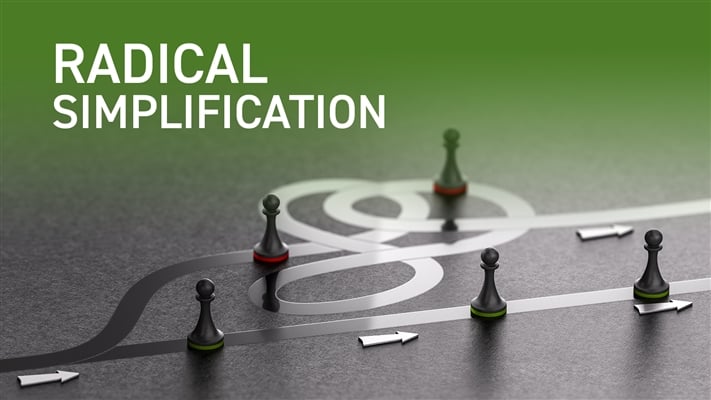In this vlog I define "radical simplification," why it's so important, and outline the five key steps to achieving it.
If you prefer to read my comments, here is a full transcript:
Radical Simplification is the act of simplifying your IT architecture and processes.
Most companies spend the bulk of their IT budget maintaining the current state.
The average company has over 900 applications and the spend can range anywhere from 50% to 90%--which is why they’re drowning in technical debt.
It’s not just the money spent sustaining these legacy systems—it’s the outages, cost of quality, security breaches, manual hand-offs, missed opportunities, and the misuse of the most valuable asset, your people who are forced to work around these systems.
As a result, these organizations are unable to react to the business realities they face whether it be a merger, an acquisition, a reorganization, difficulties in their supply chain or any other threat to their business.
To be competitive, you need to continually transform to achieve an IT landscape that is both agile and current—one can change as your business requires.
There are five key steps you can take to radically simplify your architecture and processes.
First—resiliency. Stop buying proprietary applications built on technology stacks that don’t allow you to customize and upgrade—Demand Resiliency.
Second―open. All applications should be open with 100% access to all of your data.
Third―flexible. Acquire applications with flexibility in mind. The processes today will not be what is required tomorrow.
Fourth―the Platform Revolution is here—embrace it. Most IT landscapes are littered with one-off, out-of-the-box applications which get stuck in time and add to your technical debt.
Make sure you have the building blocks to customize, build, and adapt to a future which is not yet known.
And lastly, everything must be easily upgradable. All applications and their technology stacks need to be current―that means on a current release. If you’re upgrading every five years, taking nine months, and spending millions to upgrade, you’re literally putting your future at risk. According to IDC, the hard cost of this legacy infrastructure can be over $3,600 per user. You can see how you quickly gets into the tens and hundreds of millions of dollars wasted―which could be saved. But the real value is the ability to transform to a sustainable business model―one that enables you to shift your spend to take advantage of future and not the past.
Radical Simplification is about digitally transforming to a sustainable business model. One that enables you to adapt to meet tomorrow’s challenges not sustain the burden of yesterday’s IT landscape.
Thanks. I hope this was helpful.

